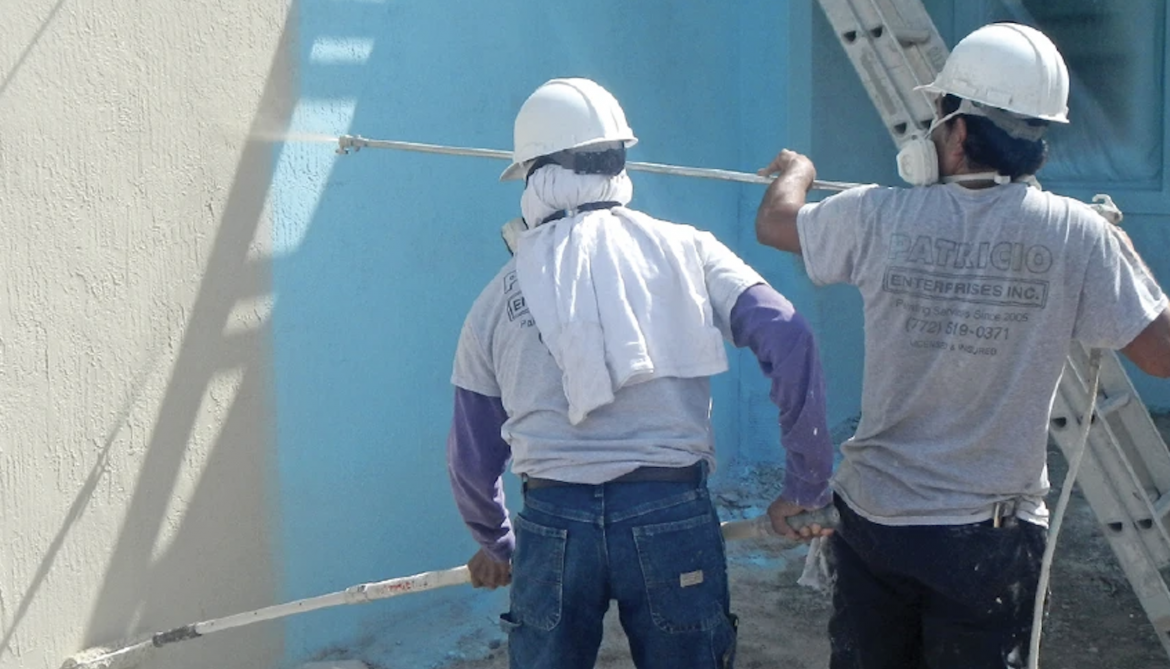While it’s a no-brainer to say that paint helps protect exterior finishes, such as stucco, from the elements, some builders seem to have forgotten that fact, even after a spike in litigation five years ago regarding failed paint coatings on stucco-clad homes.
In those cases, and others we saw in the field back then, builders failed to specify the best-quality coatings and their painting crews took shortcuts in preparation and finishing.
Many builders have improved their quality assurance since then, but for those that have not, here are three things to scrutinize: the paint, the preparation, and the application.
Never Skimp on Primer
The most important variable with any paint coating is its solids content. Solids are what’s left after the coating dries, so a good-quality paint or primer has more of them.
The primer, especially, should have a high solids content because it’s the finish cladding’s last line of defense against the elements. Wise builders base their top-coat paint specifications on the quality of the primer, or at least an assumption of a high-quality base coating.
For instance, the specifications sheet for a popular brand of concrete and masonry primer/sealer for stucco applications lists a solids content of 41 percent by volume and 55 percent by weight—numbers similar to other high-quality coatings.
Hydration Is Cheap Insurance
Freshly applied stucco has a high enough alkalinity to “burn” the primer and paint, with consequences ranging from discolored spots to complete paint failure. Before priming, it’s important to lower that pH and test across various wall areas.
Alkali-resistant primers can be applied on stucco with a pH as high as 13 but require at least seven days to cure. We recommend bringing the pH down even lower—as close as possible to 7 (neutral) and no higher than 9.

An easy, reliable pH test uses distilled water to wet the surface and a pH pencil to mark it (as shown below the pH color chart in the above photo). The pencil mark turns a color that indicates the pH level per the chart. Aim for a pH of 9 or less, and test various parts of the house before priming.
In dry climates such as the Southwest, cure time alone won’t lower those numbers, so, you’ll need to hydrate the stucco at least three times over the course of a week by gently misting the walls with a hose fitted with a spray nozzle.
Think you don’t have time for hydration? Just ask a builder who’s been sued over stucco problems. Some large production builders now include this step in their standard work specifications and require painters to document that the pH is at 9 or lower at the time primer and paint are applied.
Avoid Shortcuts
Of course, these suggestions have limited value if the wall isn’t fully coated. Most painters spray-apply primer on stucco, usually in an upward direction. That practice may actually only cover the bottom half of each grain of the aggregate, leaving a void or “holiday” in the coating, which affects performance. The only way to get full coverage is to backroll the coating immediately after spraying.
During tests of failed paint jobs, we’ve discovered inadequate primer coats that had been quickly covered with finish paint. To prevent that from happening, some builders now require a primer tinted a sky blue color, enabling a QA manager or project manager to see if the primer has been applied properly before giving the go-ahead for the finish coat.
While the hydration requirement is unique to stucco, the need to choose a quality paint coating and apply it correctly is true for all painted surfaces to ensure long-term durability.
Richard Baker drives quality and performance in home building as a building performance manager of the PERFORM Builder Solutions team at IBACOS.
This piece first ran as part of Pro Builder magazine's Quality Matters column.








Add new comment